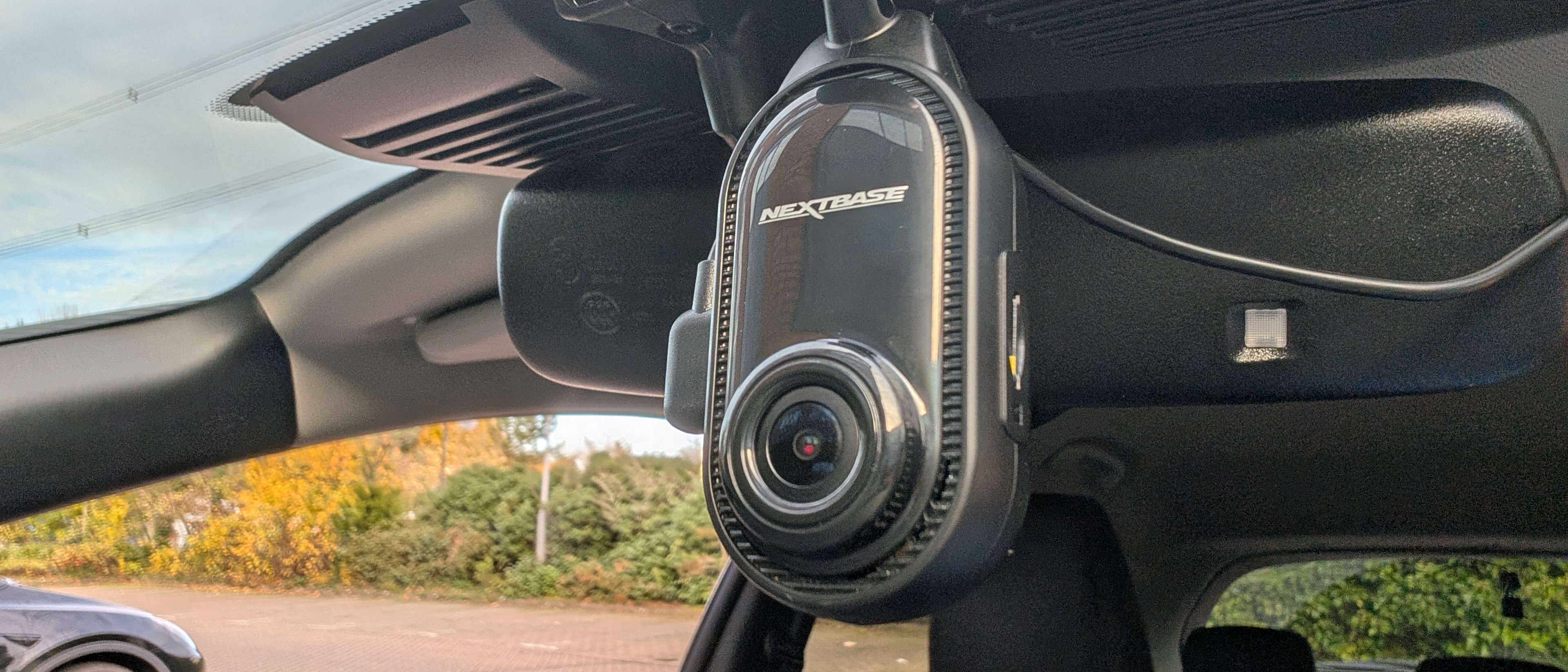
Field of View: 140°
Resolution: Choice of 1080p, 1440p
GPS: Yes
Display: No
Voice Control: Yes
The Nextbase Piqo is the latest in Nextbase’s long line of dash cams. But while the company is best known for its premium cameras that pack in high-end specs with an equally-high price tag, it seems to be approaching things differently with the Piqo.
Think of it as a smaller and cheaper version of the eye-wateringly-expensive Nextbase iQ, which costs between $500 and $700. The Piqo doesn’t have quite as many smart features packed inside but that certainly doesn’t mean it’s lacking. Nextbase has managed to produce a camera that offers solid video quality and abilities you might not realize you knew existed — for a fraction of the price
But is it worth the price, and could this be one of the best dash cams for your car? Read our full Nextbase Piqo review to find out more.
Nextbase Piqo review: Price & Availability
The Nextbase Piqo is available now in two configurations, starting at $130 / £100. This gets you a “1K” model capable of recording at 1080p resolution, or you can choose to pay $150 / £130 for a 2k model that records in up to 1440p. Sadly there’s no 4K video option with this particular dash cam.
The Nextbase Piqo can be found at Nextbase.com, as well as major retailers like Amazon and Best Buy. Nextbase only provides a microSD card for the 2K model if you buy in the U.S., which means you’ll have to source a compatible memory card yourself.
Nextbase Piqo review:
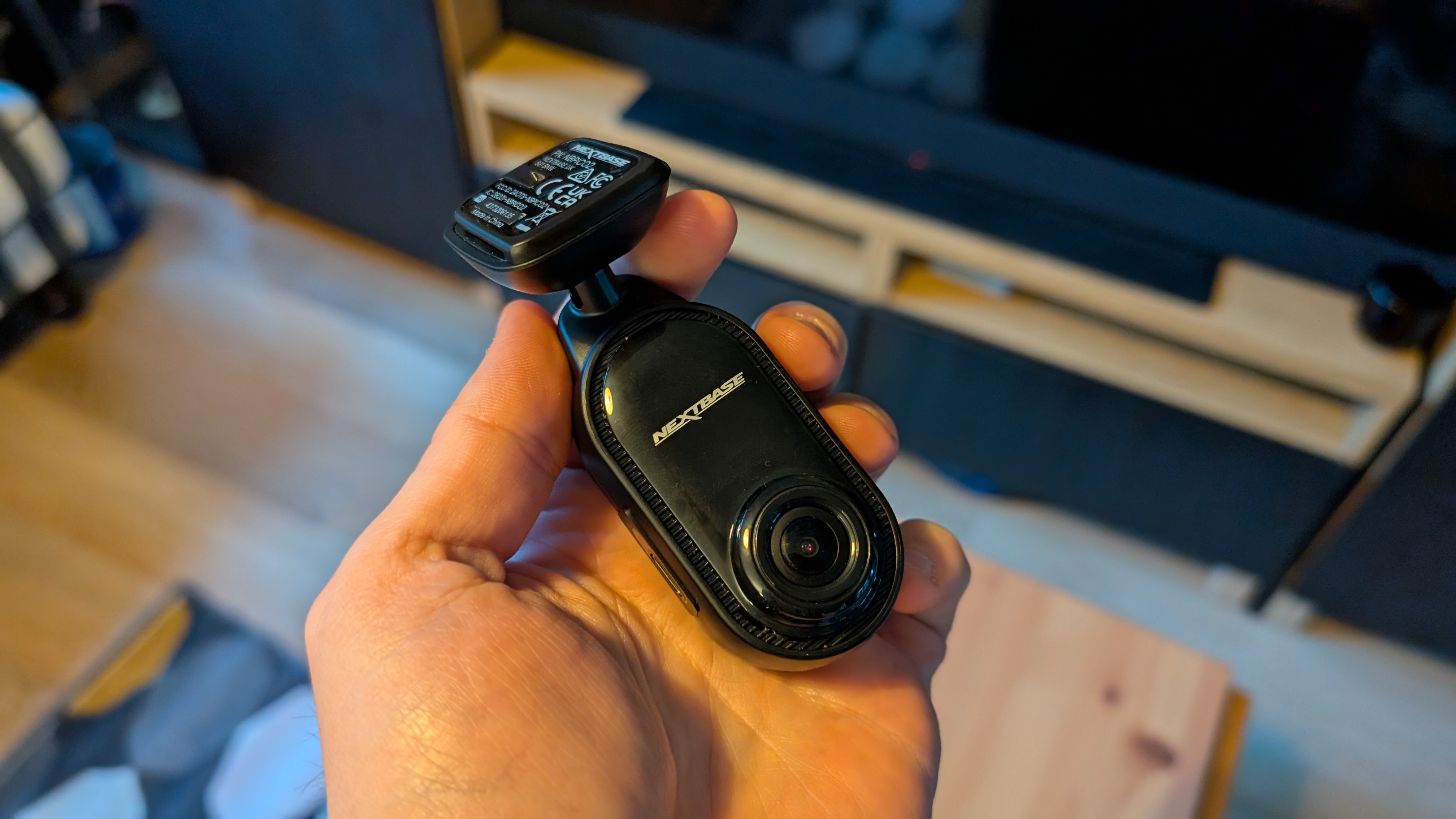
The Piqo looks like a slimmed down version of the Nextbase iQ, sporting the same ovular shape with a single camera lens and rear button. It’s a little sleeker though, lacking the protruding camera lens and rocking a significantly smaller design. The camera is just over 3 inches long by itself, or up to 4 inches if you account for the adhesive mount. It’s also 1.5 inches wide and around an inch thick.
The Piqo is certainly not as small as something like Garmin’s Dash Cam Mini 2, but it is still very compact compared to other Nextbase cameras. It easily fits behind the rear view mirror, with only the bottom-most curve poking out within my view from the driver’s seat. That small size does come with some trade-offs, though. The Piqo lacks many of the smart AI features present in the iQ, nor does it have an active LTE connection. But that also means it doesn’t have the enormous mount that facilitates those features.
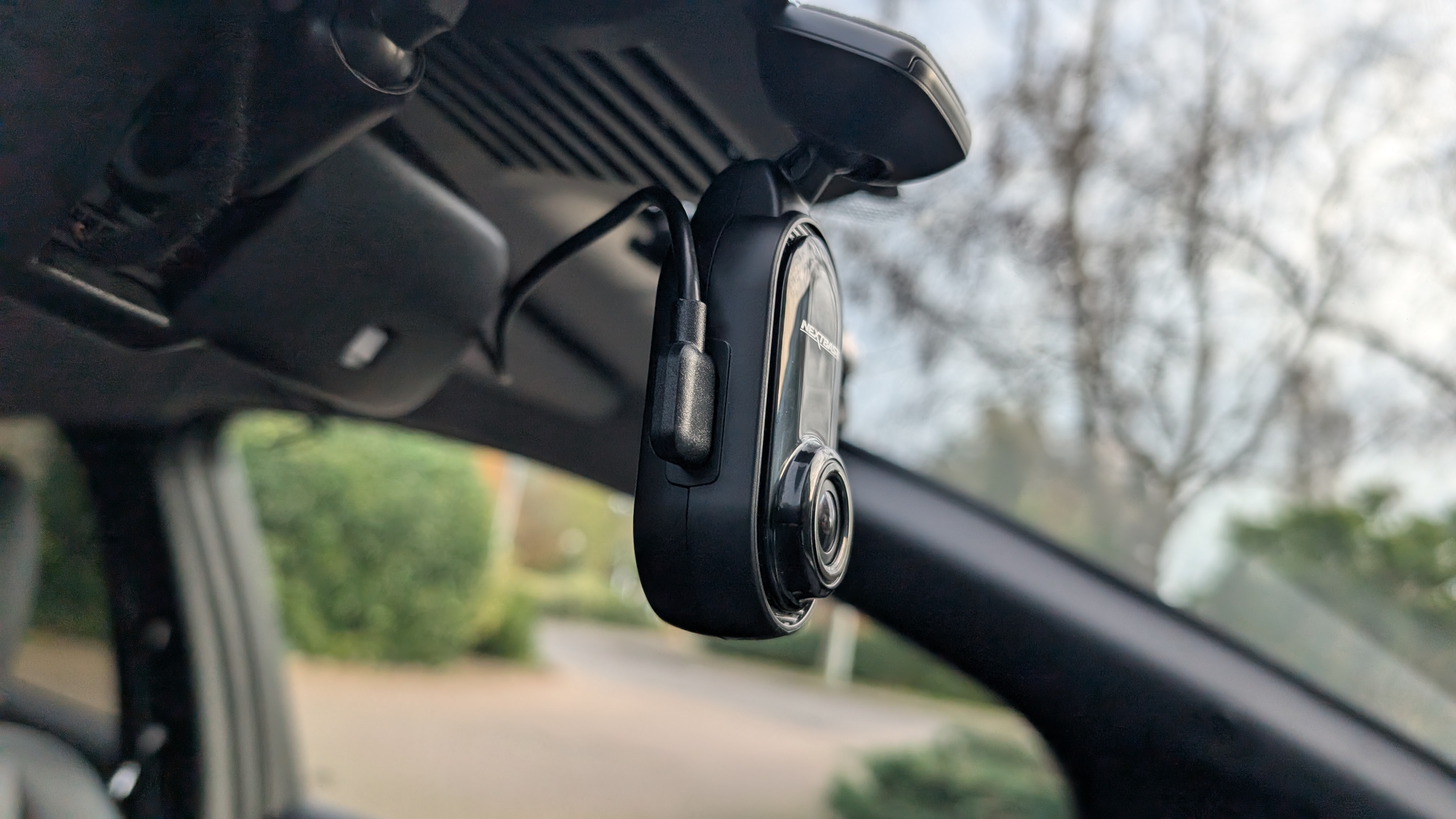
The mount uses an adhesive sticker, which locks in place pretty solidly. Personally I prefer suction cups with adjustable locking mechanisms, since they’re generally easier to remove. However the Piqo does slip out of the mount when needed, and comes with an additional mount clip should you ever need to move it quickly.
Provided you can see what you’re doing, plucking the camera out is a cinch. Sticking it behind my mirror did make removal a little harder, on account of restricted viewing angles. So that's worth bearing in mind if your car's cabin is as cramped as mine.
Other design points of note include a single USB-C power port on the right side of the camera, a single button on the back, and a microSD card slot on the left. There’s no screen, nor an option to hardwire the Piqo to another Nextbase camera. So if you want to record from the rear (or side), you’ll need to invest in another wireless camera.
Nextbase Piqo review: Setup
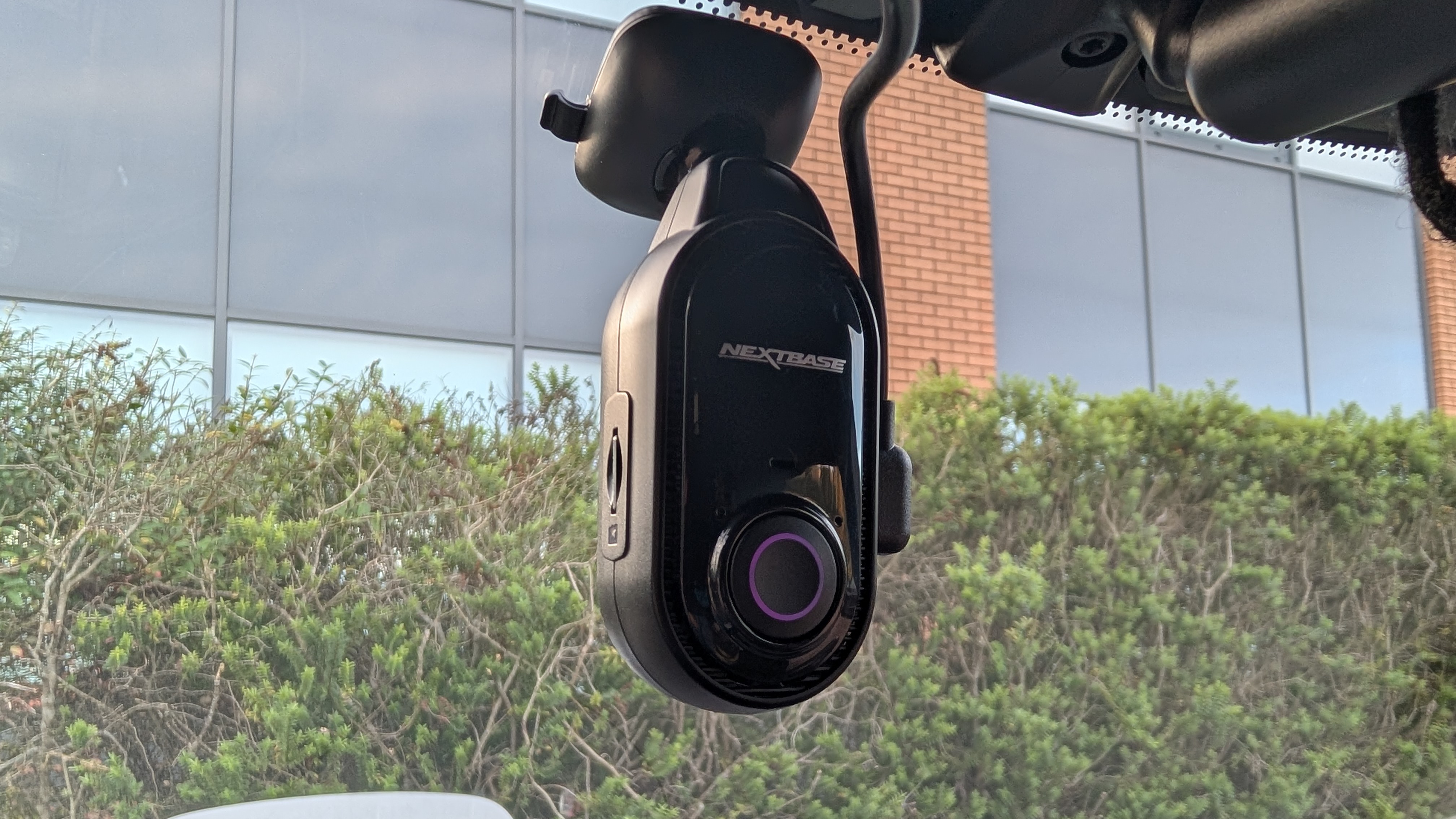
The Piqo setup is all done through the Nextbase app, (available on Android and iOS) which takes your phone through the processes of connecting to the camera via Wi-Fi and Bluetooth. Wi-Fi is done automatically by the app, while Bluetooth pairing is no different to any other device you may have used. Press the button to enter pairing mode, then connect to your phone through the on-screen prompts. So far so good.
The setup also forces a firmware update, which is where I ran into some problems. No matter what happened, the Piqo just seemed to freeze for an extended period of time — with no visible progress being made. Nextbase has told me it would look into this, and will be refining the firmware update process to make it clear what’s happening when. In my case, I ended up manually copying the new firmware files onto the Piqo’s microSD card, which solved my particular issue.
Following the firmware update, the software setup was all complete. All that followed was physically installing the Piqo into my car. The camera itself came with a minimalist adhesive mount, which offered a pretty rock solid grip with the windshield. I chose to stick it behind the rear mirror, as close to the center of my windshield as I could manage.
As for the cable, since there’s only one camera that needs powering, you can get the whole thing wired up and tucked away pretty quickly. It took me a few minutes to get everything hooked up to the cigarette lighter, with the aid of Nextbase’s crevice tool. Your experiences may vary.
Nextbase Piqo review: Software
The absence of a screen on the Nextbase Piqo means that the companion app has to do a lot of heavy lifting. Nextbase has released a brand new companion app for this dash cam, and so far the only device it works with is the Piqo — connecting via a mix of Bluetooth and Wi-Fi. This is the place you go when you want to view and download clips, or alter any of the settings on your Piqo camera.
The Piqo comes with the usual array of camera settings, including options to change video quality, alter exposure and mark the recorded videos with various timestamps. You can add your license plate to the footage, for example, or remove things like the timestamp, speed and GPS coordinates. But these are switched on by default, and you’d be better off leaving them that way.
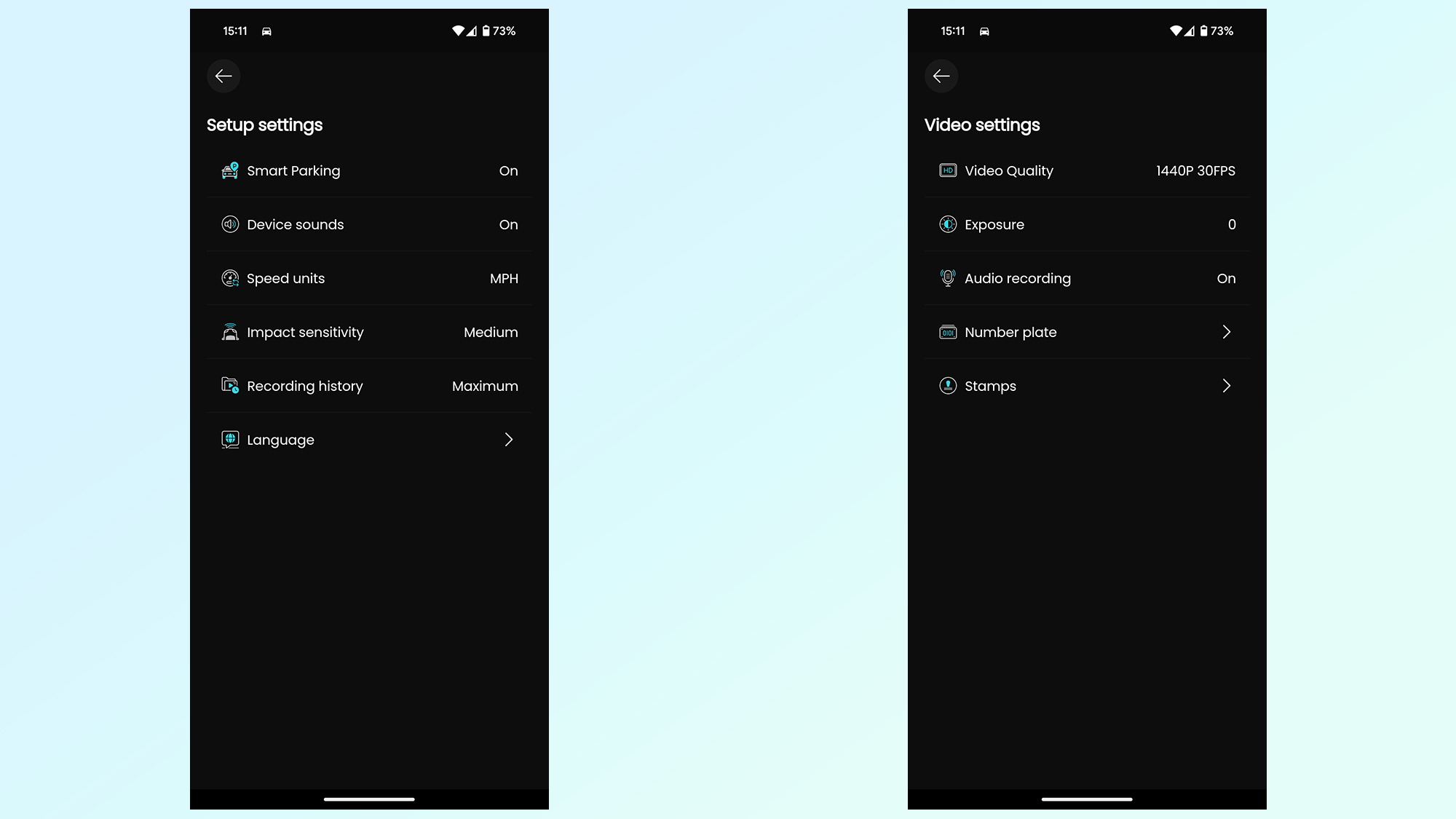
The setup settings menu also lets you control other standard features like smart parking, and speed units, plus impact sensitivity. That lets you alter how liberal your camera will be with saving footage and preserving it from being overwritten. It's a nice addition, and not something you see in a lot of other dash cams.
Changing settings on the app was an absolute breeze, though I found anything that required a Wi-Fi connection could be a little finicky — especially on Android. iPhones didn’t seem to have as many issues, but there have been times when I found connecting to the Piqo’s Wi-Fi to be… challenging. Nextbase did say that outside connections like Android Auto can get in the way, but I did still have problems physically connecting to the camera via Wi-Fi.
It certainly makes things like accessing and downloading video clips rather challenging. It’s much easier to pull the Piqo’s microSD card and access the videos directly — though you miss out on the smart data like seeing where the clip was recorded on a map your average speed throughout. Thankfully Live View generally worked pretty quickly which is very helpful for both setting up the camera and if you’re ever in doubt that it’s working correctly.
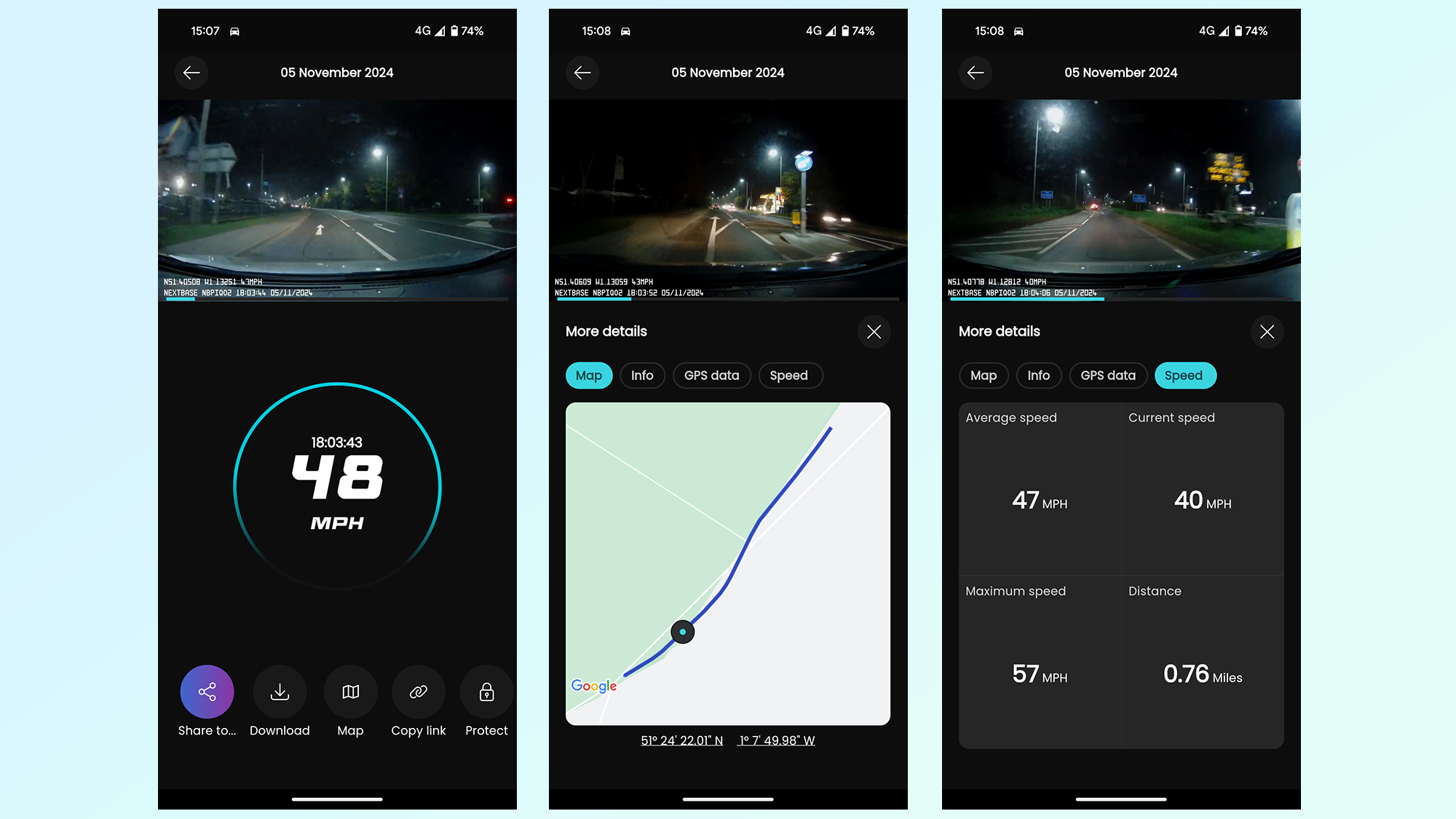
Fortunately you don’t need to connect to the Piqo to activate its smarter features. It’s all done by voice commands and the wake word “Hey Nexy.” Like the iQ there’s no third party service in the middle; you simply wake the camera and ask for what needs to be done. Those commands include “Protect” to lock video footage and prevent it from being erased, “privacy mode” which stops recording and “witness mode” which I’ll go into below. The Piqo also responds to “stop witness/privacy mode” to go back to normal recording behavior.
Witness mode is an iQ feature that’s made the transition. Once active, it sends alerts to trusted contacts and a live feed of what the camera can see, which is useful if you find yourself in an altercation, being pulled over, or any number of situations where you want someone else to be able to see what’s happening. Nextbase also added Guardian mode, which alerts you when your car leaves a specific area, and Emergency SOS, which is exactly what it sounds like. You have an accident, and Nextbase will alert contacts and first responders.
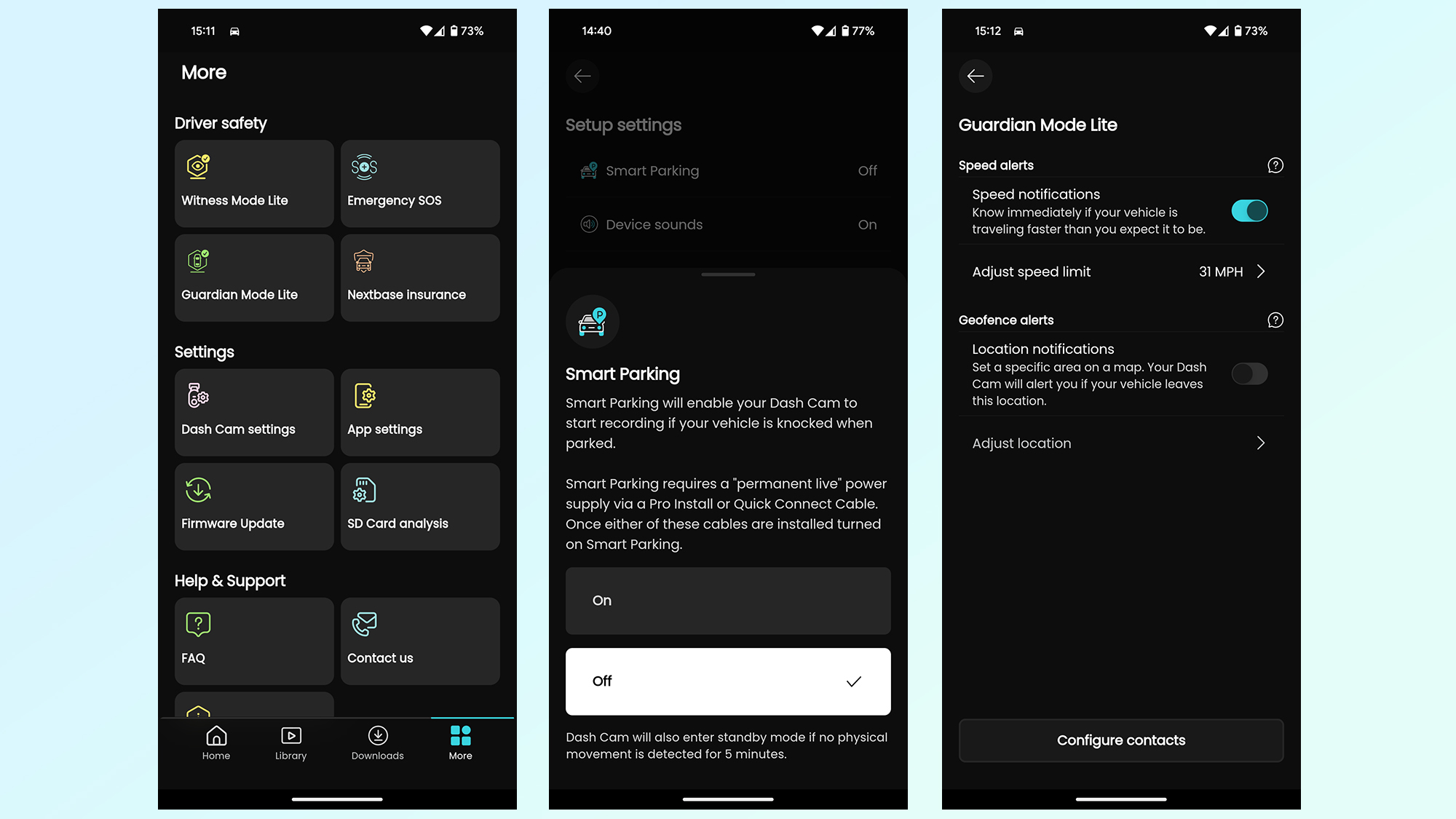
All three of these features do require a subscription, which is $5 / £3 a month of $50 / £30 a year. That subscription also comes with cloud storage, so you have somewhere other than your camera to store the clips.
Smart Parking is also available if you hardwire the Piqo into a power supply. This protects your car when it’s parked and the engine is off, recording footage whenever it detects something may have hit you. Your options for this are the traditional Nextbase Hardwire Kit, which wires into your car’s fusebox, or the Quick Connect Cable which draws power from your OBD port. Both cost $30, and according to Nextbase function exactly the same way.
Nextbase Piqo review: Video and Audio
The one thing to remember about the Nextbase Piqo is that this is a $150 dash cam in its most expensive iteration, and you have to temper your expectations. This is not a 4K 60fps recording machine like you’d find in dash cams that cost two of three times more. Needless to say the video quality is not the best, though that’s not to say that it’s bad. Just that you’re not getting crystal clear quality — especially at night.
The Piqo isn’t so great at picking up details off in the distance, but overall it’s pretty solid video quality. It’s not the kind of camera you want if you insist on having true-to-life coloring, and that fuzzy sheen over the whole screen is something you will not be able to unsee.
But the camera can pick up the important stuff about what’s going on around you. Assuming you get close enough, you can clearly read road signs and markings, as well as license plates from the cars around you, which is very important, should you ever need to refer back to that footage. Plus, it's able to pick up sounds pretty clearly, especially inside the car. The audiobook I was listening to (The Mercy of the Gods by James S.A Corey) came through on that footage loud and clear.
Night time video is a very different story — something a lot of dash cams struggle with. Typically Nextbase does quite well, as we’ve seen on the Nextbase 622GW and iQ, but the Piqo doesn’t quite live up to those lofty heights. In fact, it’s really difficult to pick up the important stuff, a problem that isn’t helped by all the glare coming from street lights and other cars’ headlights.
Considering how much the Piqo costs, that level of quality is just about acceptable. But the fact it can’t really pick up car license plates is kind of a problem. Even if you’re nice and close to the car in question, the glare coming off the plate is so bad that it’s completely illegible. I get that they’re made to be reflective in the U.K., but that is rather problematic. Honestly I expected more from Nextbase, especially after the stellar results from the iQ last year. So this is something any prospective Piqo owners will need to be aware of if they’re driving at night.
One of the things I did notice was that the 1440p video was a little jagged, especially at higher speeds, which I figured was down to it being filmed at 30fps. The Piqo does support 60fps, but only at 1080p resolution, so I went to see if it would make any difference to the video. The frame rate definitely improved, maybe a little too much since it started triggering my motion sickness, but the video quality was considerably worse.
Pushing down to 1080p made the video a lot grainier, and a lot of the smaller details were more or less lost. I feel like it is literally the difference between night and day, and the quality decline by dropping to 1080p is almost like filming at night — just without all the darkness getting in the way.
Nextbase Piqo review: Verdict
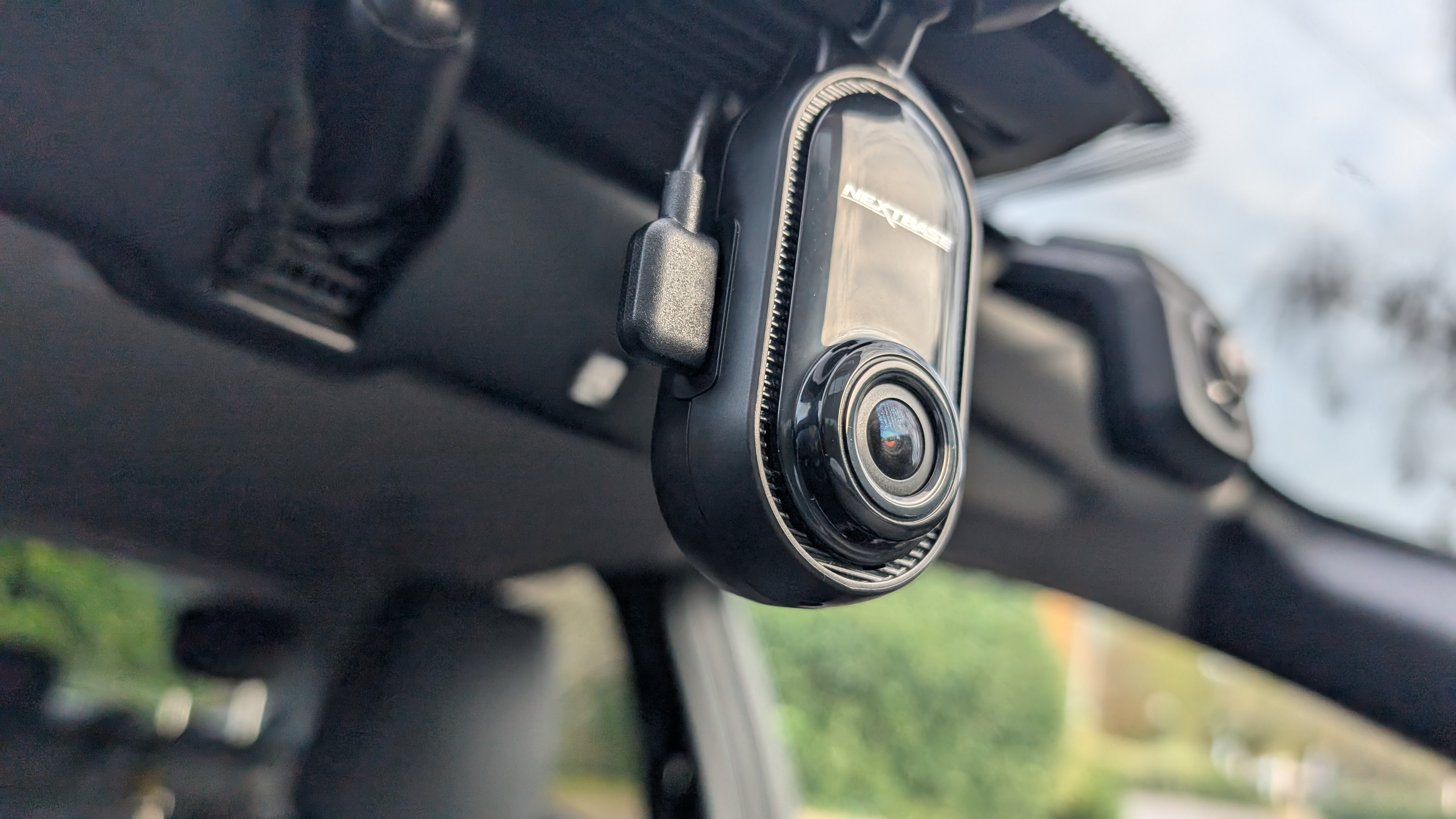
The Nextbase Piqo is not without its flaws, but it does still manage quite a lot for the $150 price tag. Video quality during the day is good, provided you keep it set to 1440p, and you have a bunch of very useful smart features packed into a small distraction-free design. I would have preferred the overall quality to be better at night, especially given the performance of Nextbase’s premium cameras, but that is a problem you’ll find on a lot of dash cams — especially at this price.
The Nextbase Piqo is an ideal dash cam for those of you who don’t necessarily want to spend hundreds of dollars on a top-of-the-range camera for your car. It’s got all the basics, plus a bunch more features that could easily save your life one day — assuming you’re willing to pay for the subscription. With that in mind, the 1440p model is definitely something to consider purchasing if you don’t already have a dash cam.
then again those of you that want higher resolution, and a rear-view camera to watch the road behind you, may want to opt for something like the Rove R2-4K Dual — which is also priced at $150.
The drop in quality at 1080p makes it harder to recommend the Piqo 1k model. That said, it does have all the same features as the 2K model for a measly $100. That's a pretty reasonable price for peace of mind when you’re driving, and having a lower resolution recording of events is better than nothing.







